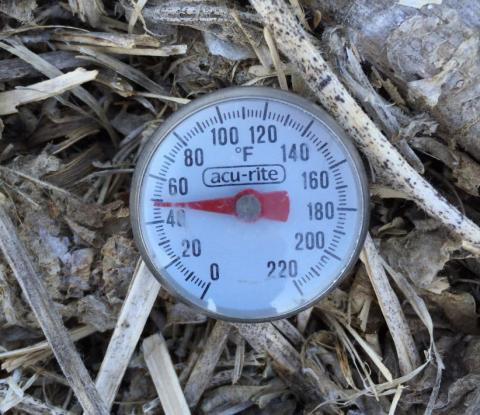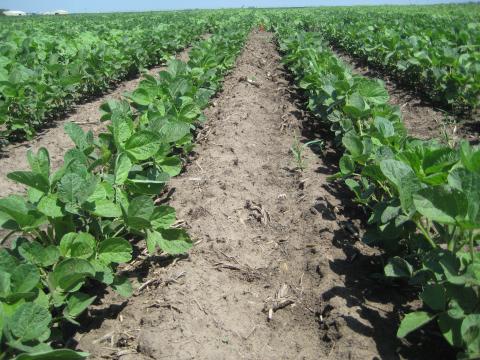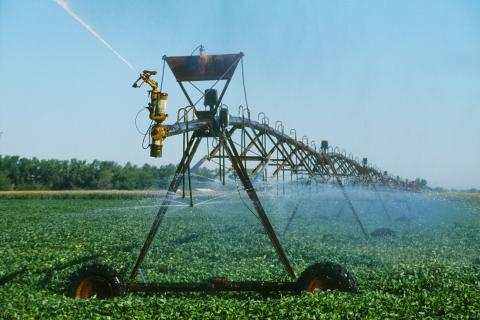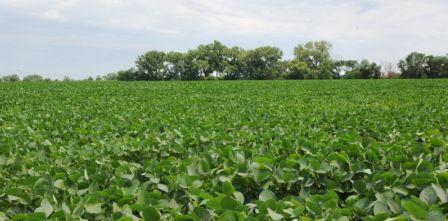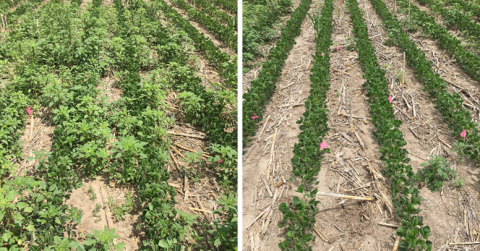Timing is Critical with Pre-Emergence Flumioxazin-Based Herbicides in Soybeans
April 26, 2017
Soybean planting has started in Nebraska and it’s time to apply pre-emergence herbicides. Six weeds have evolved resistance to glyphosate in Nebraska. The best way to effectively control resistant and other hard-to-control weeds is by applying residual, pre-emergence herbicides with multiple effective modes of action. Several new herbicides recently registered in soybean are in this category and could be considered.
Above Normal Temps Lead to Jump in Corn Planting Progress
April 25, 2017
With temperatures averaging two to four degrees above normal for the week ending April 23, corn planting was well underway and soybean planting had started in Nebraska, according to USDA’s National Agricultural Statistics Service.
Corn, Soybean Planting Considerations for this Week’s Cold Snap
April 24, 2017
With nighttime lows predicted to drop several nights this week, growers are advised to cautiously assess the potential for germination problems due to imbibitional chilling before planting. Agronomists advise checking soil temperatures in each field the day of planting as well as forecast temperatures for 24 hours (soybeans) or 48 hours (corn) after planting.
Planting Interval of Corn after Previous Year's Soybean Herbicides
April 21, 2017
Corn-soybean is the most common cropping system in eastern Nebraska. While corn growers are getting ready for planting this season, it is important to pay attention to the planting interval of herbicides applied the previous year in soybean. Certain soybean herbicides have relatively longer planting intervals for corn, especially if they are applied post-emergence in soybean. This is particularly important because soybean planting was late last year in much of Nebraska due to May rains. This caused postemergence herbicides to be applied later in the season than they might normally be, making it important that you pay attention to the planting interval.
Planting Soybean after Soybean (Part 2): In-Season Management Considerations
April 13, 2017
In Part 1 of this article, we look at considerations for planting soybean after soybean. In this article, Part 2, we share considerations for in-season management.
Planting Soybean after Soybean (Part 1): Planting Considerations
April 13, 2017
Farmers are increasing their soybean plantings for 2017, which likely means some are shifting to soybeans-after-soybeans. This article looks at what you should be considering at planting time as you consider changing your cropping sequence.
Starter Fertilizer: When is it Warranted?
April 12, 2017
As you evaluate the cost of inputs, consider this: Only focusing on expenses without subsequent income changes is misleading. The most profitable plan uses the most profitable inputs. Is a starter fertilizer one of those inputs? The authors look at university and grower research under various conditions to see when a starter fertilizer offers economic benefits.
Keys to Managing Herbicide Resistance in Soybeans
April 6, 2017
Are last year's weed escapes still haunting you? Applying these six key management practices and five key timings can help you improve control of herbicide-resistant weeds this year.


